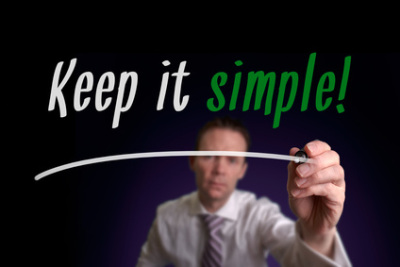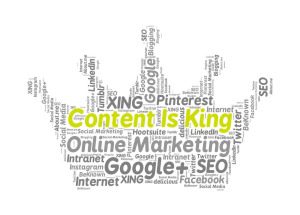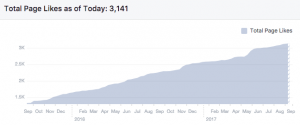Simplicity of brand message is connected to company performance
 The chances are you have been to a business networking meeting and asked a newcomer “what do you do?” only to get some lengthy description of a wide range of services, leaving you none the wiser as to what their business is about. You have probably been to trade shows and exhibitions and been attracted to visit some stand, only to walk away wondering what the company really does.
The chances are you have been to a business networking meeting and asked a newcomer “what do you do?” only to get some lengthy description of a wide range of services, leaving you none the wiser as to what their business is about. You have probably been to trade shows and exhibitions and been attracted to visit some stand, only to walk away wondering what the company really does.
Harvard Business Review reckons you should be able to sum up your business in six words or less. Can you do that?
Research conducted by Siegel+Gale, a brand growth company, shows that there is a clear link between simplicity of brand message and the financial performance of the company. They have tracked hundreds of brands over the past five years and researched opinions about them in over 12,000 people in 8 major nations, including the UK. The brands deemed “simple” by the consumers outperformed other brands and also massively increased their value compared with the FTSE100 or the DOW.
For some businesses the results prove that simplicity is key. Aldi, the low-cost German-based supermarket, comes out as the “number one” brand, for the second year in a row. Why? Because its message is simple and doesn’t vary – good quality at low prices with no frills. Aldi beat Google into second spot. But Google gets there because when you use it as a search engine it could not be simpler – type in what you want to find out and get the results.
Down at the bottom end of the ranking, however, comes LinkedIn at 84th out of 90. The reason is because we are confused as to what we are really supposed to use LinkedIn for. Indeed, it is complex – is it a place for recruitment, for publishing your updates, for having a personal profile or a company one, or is it a forum where you discuss things with people? Count yourself lucky – LinkedIn abolished several older features such as “Answers”, which added another layer of complexity to its system. You may well have a LinkedIn profile, but do you actually use it and gain money from it? Only a tiny, tiny proportion of people using it do. Most people “have a profile” and leave it at that. Why? Because it is so confusing.
And who is the most complicated brand in the list? That “award” falls to AXA the insurance company, for having an extremely complex legalistic approach that takes people ages to wade through. However, AXA is in good company; in terms of industry performance, the least simple industry is insurance. The clearest brands of all were mostly in retail – you know what you are getting when you visit most stores. Low down on the list of industries was social media – too many complex systems and overlapping ideas. It seems that social networks just keep adding features, because they can. That leaves us confused.
Ask yourself “what is Facebook?” Is it a place to chat with people, or a place to promote a business? Is it a place to share pictures, or (thanks to the latest update) a place to visit web pages? Perhaps it is also place to watch videos – or, there again, is it a place to run a poll or a survey? Do Facebook know? It can do all of these things and more, but with each new change it just leaves us confused.
So here is the challenge which emerges from the Siegel+Gale study: can your online business be communicated within a second or two – the time it takes to say six words? If it can, you have probably gained attention. If it cannot, you are wandering into the territory of confusion.
Consider popular websites like the BBC news site – it has a clear and simple message, “read this”. Google similarly has a simple message “search here”. So does Amazon – “buy this”. Does your business really gets its message across so simply people can get it in a second? Or is your website like that person you met a networking event, providing loads of rambling detail with no real clarity as to what it is you actually do?
Digital & Social Articles on Business 2 Community
(366)





